- The objective I chose to focus on is to compare and contrast the central nervous system and the peripheral nervous system. This is a hand molded small scale skeleton structure with painted nervous system display. The lights indicate different sensory neurons firing messages through PNS channeling the electric signal to the CNS to create possible action potential.
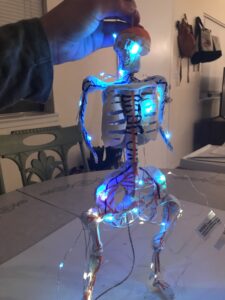 CNS reacting to outside stimuli and using the PNS to transmit electrical signal
CNS reacting to outside stimuli and using the PNS to transmit electrical signal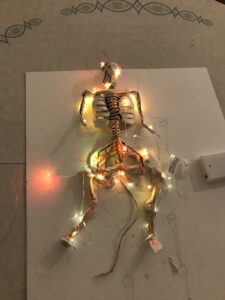
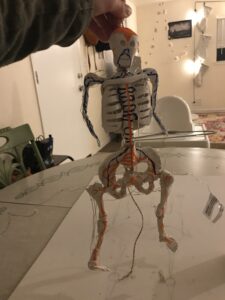
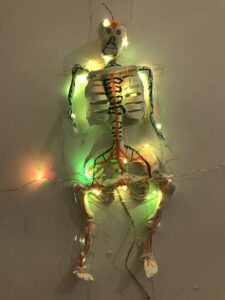
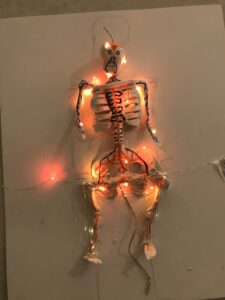
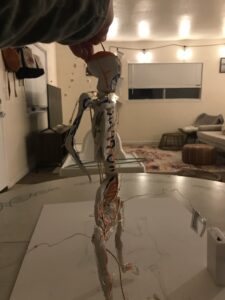

For this assignment, Veronika Von Schert focused on the nervous system. She focused on both the central nervous system (CNS) and the peripheral nervous system (PNS).
What was nice to refocus on is that this system is divided into so many other sections to include forebrain, cerebrum, hippocampus, basal ganglia, hypothalamus, the midbrain, this consists of superior and inferior colliculus, motor nuclear, and hind brain. Although I had read this and covered it while in class it was a good refresher of what the PNS and CNS consist of.
To illustrate this, Veronika hand molded an entire skeleton. She then drew out both the central and peripheral nervous system and added lights to the mold. By adding the lights, she made it very easy to see the way that the nerves would fire as well as where they are along the body itself. Although she did talk about the CNS in great detail I believe that she missed a good chance to talk about how the skull and the spinal cord are the protectors for the CNS, although she did talk about how the CNS is at home in the skull and back bone that the PNS also has room in both of those spots as well. She does a great job explaining that these two systems need each other and that either system won’t function the same without the other. I think that she did a great job explaining what the central nervous system and the peripheral nervous system do. How that work and illustrated this all in an easy to understand write-up and model to follow.